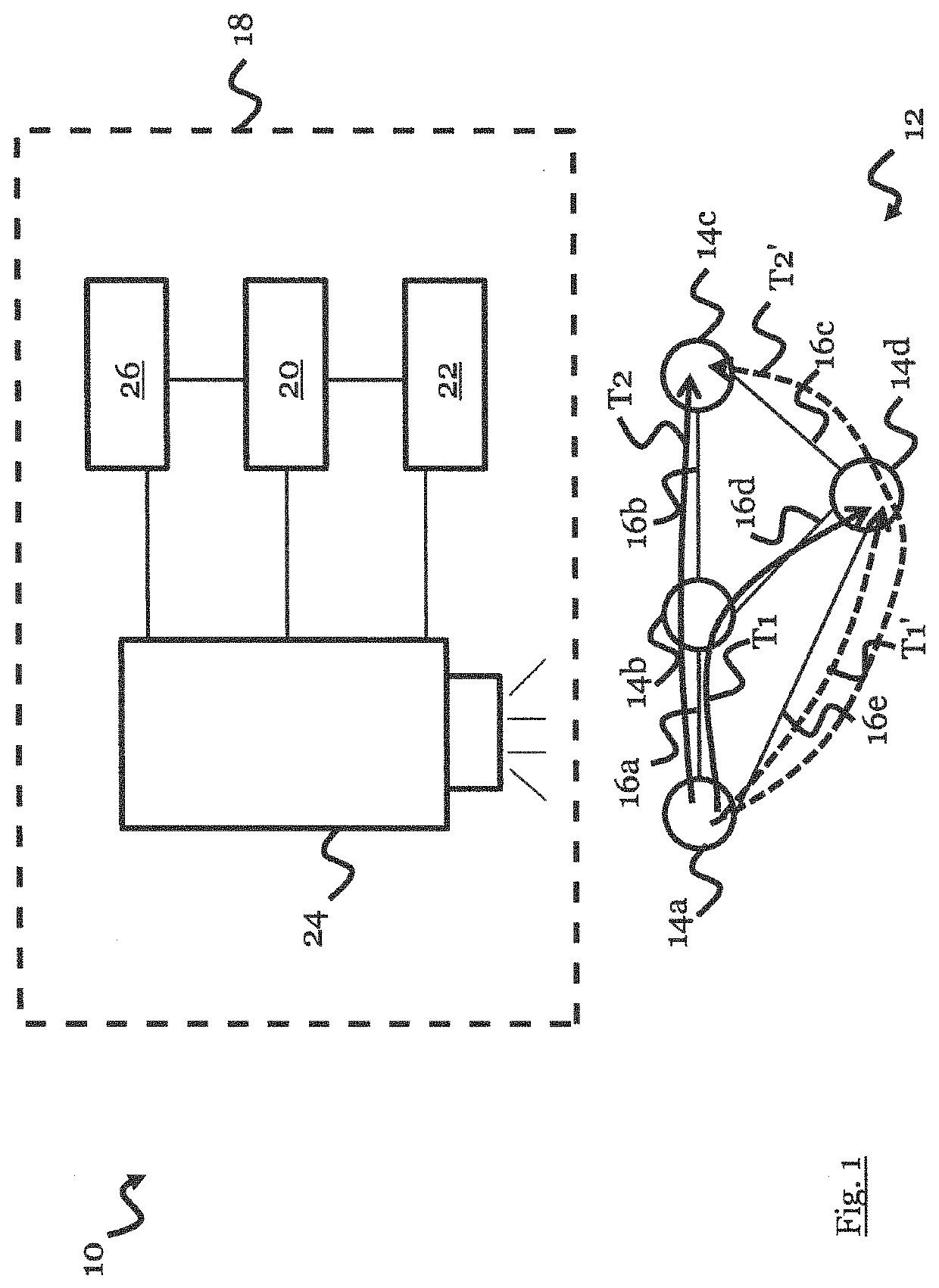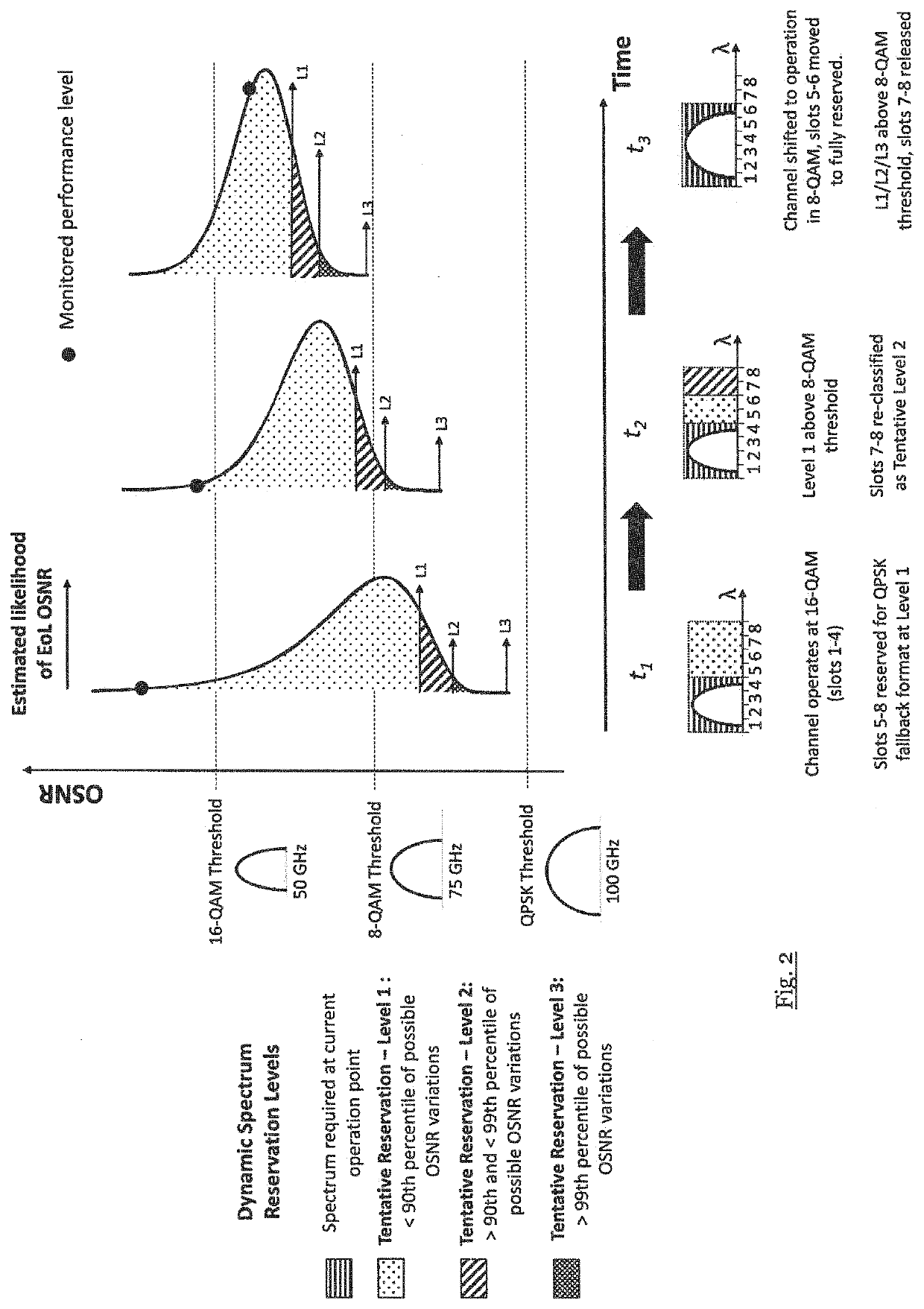Method and system for assigning spectral resources
a technology of spectral resources and methods, applied in the field of methods and systems for assigning spectral resources, can solve the problems of inability to find available network resources to setup the restoration channel, inability to completely remove the uncertainty of traffic conditions such as the number and mix of existing channels, and achieve the effect of high performan
- Summary
- Abstract
- Description
- Claims
- Application Information
AI Technical Summary
Benefits of technology
Problems solved by technology
Method used
Image
Examples
Embodiment Construction
[0090]Specific examples for a method and system for adaptively assigning spectral resources will now be described for the example of an optical communication network. However, the techniques of the present disclosure are not so limited, and may be applied to any other communication channel, such as communication channels relying on the transfer of electrical and electronic signals.
[0091]FIG. 1 is a schematic illustration of an optical communication environment 10 in which the techniques according to the present disclosure can be employed.
[0092]The optical communication environment 10 comprises an optical network 12, which may comprise a plurality of network components or network nodes 14a to 14d that are linked by optical communication paths or edges 16a to 16e.
[0093]For instance, the optical network components 14a to 14d may be a Reconfigurable Optical Add / Drop Multiplexer (ROADM) or any other network component. The optical communication paths 16a to 16e may be sections of an opti...
PUM
 Login to view more
Login to view more Abstract
Description
Claims
Application Information
 Login to view more
Login to view more - R&D Engineer
- R&D Manager
- IP Professional
- Industry Leading Data Capabilities
- Powerful AI technology
- Patent DNA Extraction
Browse by: Latest US Patents, China's latest patents, Technical Efficacy Thesaurus, Application Domain, Technology Topic.
© 2024 PatSnap. All rights reserved.Legal|Privacy policy|Modern Slavery Act Transparency Statement|Sitemap



